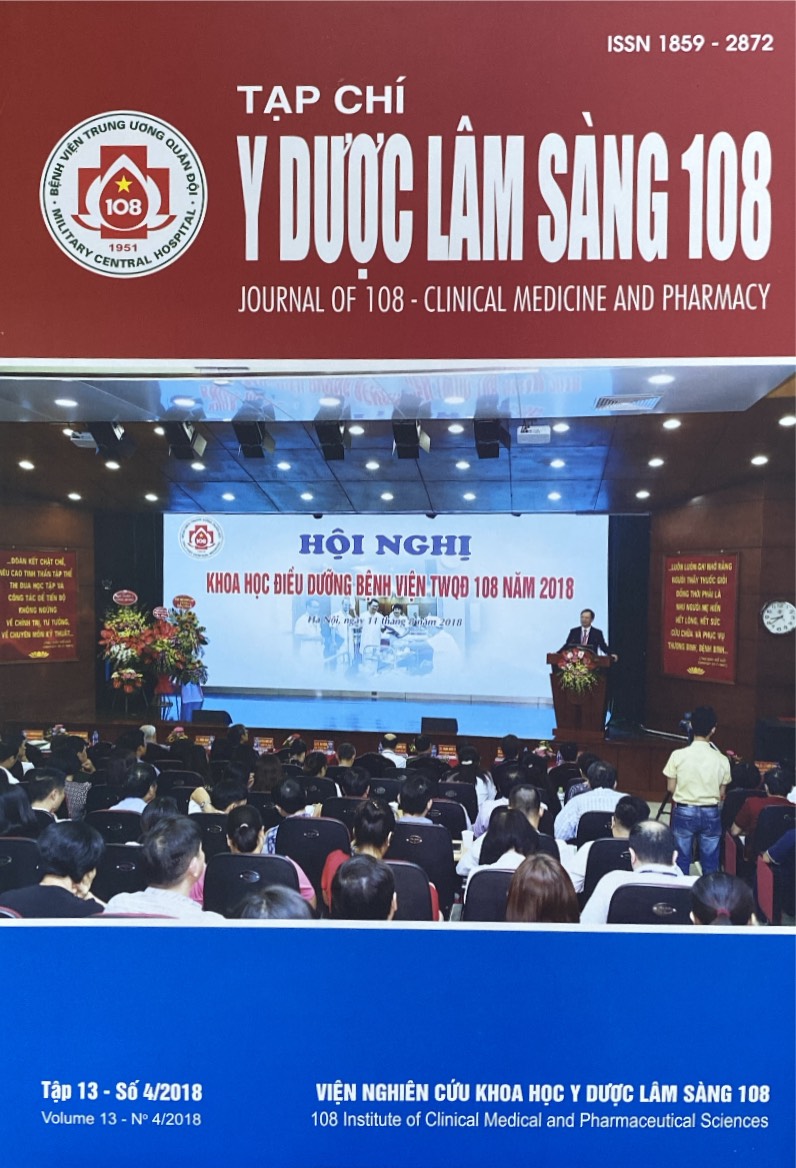Metabolic syndrome in patients with psoriasis: A comparative study
Main Article Content
Keywords
Abstract
Objective: To describe factors of metabolic syndrome and to compare the differences between psoriasis patients and psoriasis patients with metabolic syndrome and patients without psoriasis. Subject and method: A cross-sectional study with the treatment group consisting of 85 patients with psoriasis and the control group including 85 patients without psoriasis who came to Ho Chi Minh City Hospital of Dermato Venereology from 2016 to 2018 and met the standards of research. Result: The mean age of the psoriasis patients and control patients were equivalent. The difference between the two groups was statistically significant (p<0.05) in BMI, waist circumference, hypertension, blood sugar, total cholesterol and LDL cholesterol in psoriasis patients with metabolic syndrome compared to psoriasis patients without metabolic syndrome. The hypertension was significantly higher in patients with psoriasis and metabolic syndrome. This difference was statistically significant (p=0.001). Psoriasis patients with metabolic syndrome have a higher blood sugar, total cholesterol, triglyceride and LDL than non-psoriasis patients with metabolic syndrome. Differences in these values between the two groups were statistically significant (p<0.05). Conclusion: The metabolic syndrome in patients with psoriasis is worse than in patients without psoriasis. There was a statistically significant association between psoriasis and metabolic syndrome.
Article Details
References
2. Bùi Thị Vân, Nguyễn Gia Bình, N.Đ.H (2015) HCCH ở bệnh nhân vảy nến thông thường. Tạp chí Da liễu học Việt Nam, tr. 2.
3. Dreiher J, Davidovici B, Shapiro J, Cohen AD (2008) Psoriasisand dyslipidaemia: A population‑ based study. Acta Derm Venereol 88: 561-565.
4. Shapiro J, Weitzman D, Tal R, David M (2012) Psoriasis and cardiovascular risk factors: A case - control study on inpatients comparing psoriasis to dermatitis. J Am Acad Dermatol 66: 252-258.
5. Sristi Lakshmi, AKN, Carounanidy Udayashankar (2014) Metabolic syndrome in patients with psoriasis: A comparative study. Indian Dermatology Online Journal 5(2).
6. Beilby J (2004) Definition of metabolic syndrome: Report of the National Heart, Lung, and Blood Institute/American Heart Association Conference on Scientific Issues Related to Definition. Circulation 05(109): 433-438.
7. Kim GW, PH, Kim HS, Kim SH, Ko HC, Kim BS et al (2012) Analysis of cardiovascular risk factors and metabolic syndrome in Korean patients with psoriasis. Ann Dermatol 24: 11-15.
8. Singh, YP, Armstrong AW (2016) Relationship between psoriasis and metabolic syndrome: A systematic review. G Ital Dermatol Venereol 151: 663-677.
9. Gisondi P, Conti A, Piaserico S, Schianchi S, Peserico A et al (2007) Prevalence of metabolic syndrome in patients with psoriasis: A hospital-based case-control study. Br J Dermatol 157: 68-73.
10. Zindancı I, Kavala M, Kocaturk E, Can B, Sudogan S et al (2012) Prevalence of metabolic syndrome in patients with psoriasis. Scientific World Journal: 312-463.
11. Sumner AD, Reed JF (2012) Components of the metabolic syndrome differ between young and old adults in the US population. (Greenwich) J Clin Hypertens 14: 502-506.
 ISSN: 1859 - 2872
ISSN: 1859 - 2872
